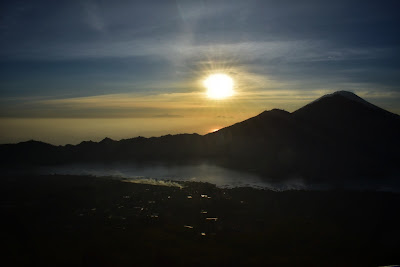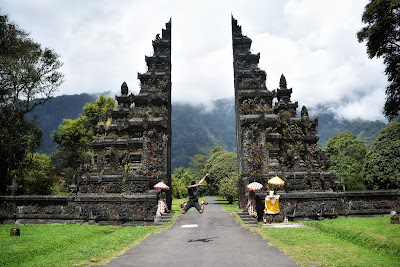Mount Triund is not only a popular trekking destination in North India but also one of the most scenic mountains in Himachal Pradesh. Every year, thousands of trekkers visit this route from around the world. Triund is at a distance of 9 kms from McLeod Ganj and 18 kms from Dharamshala. The hike is relatively easy, which does not require you to have great physical fitness. However, it’s still important to know some details about the trek.
The best option is to start the trek from Gallu Devi Temple. Normally taxis will charge around INR 400 to this point from McLeod Ganj, and they are easy to find. It takes a 6.5 km walk from the temple to reach the top of Triund hill. With well-defined paths, surrounded by rhododendron and oak trees, there is no fear of getting lost. You can reach the hilltop in approximately 3-4 hours, depending on your walking pace.
The first 5 kms of the trek are simple and not very exhausting. There are plenty of local shops along the way, where you can stop for breaks and eat something (price is very reasonable). After covering the first few kilometres, the trek route takes on a steep turn and requires a brisk walk. Popularly known as the 22 curves, the last leg of the trek comprises 22 sharp curves, which may take your breath away. It is worth mentioning that the difficulty of the trek increases during winter because of the presence of snow.
The temperature starts dipping around December. During this month, Triund weather can range between 10-degree Celsius during the day and minus 5-degree Celsius during the night. Snowfall is also quite common in the month of December. While planning your trek in winter, it’s important to consider road conditions, which may seem more challenging than usual and the clothing. You need to carry a sweater or jacket, raincoat, torch, 2-3 pairs of socks and some basic medicines.
Getting a camp for an overnight stay is pretty easy. There are plenty of tour agents available in McLeod Ganj and also through online. The average Triund camping price is around INR 1,000 which includes twin sharing accommodation in the tent, breakfast, and dinner. In addition to this, you can hire a local guide for INR 1,000. In my opinion, a travel guide is not needed for this trek.
Travel Blogs
Wednesday, February 6, 2019
Sunday, February 3, 2019
Top 11 things to do in Bali
1. Mount Batur
Bali is home to outstanding volcanic peaks. Here you will find one of the region’s most active volcanoes, which has erupted 26 times in total. Mount Batur, rising 3000 metres above sea level in the Kintamani highlands. What’s great than hiking this for sunrise? Get your stuff ready and start climbing 2 hours before the sunrise to reach the top for the most scenic sunrise in Bali.
2. Dive at Tulamben Liberty wreck
Bali trip is not fulfilled without a dive. Why not dive around the historic USAT Liberty wreck from World War II. Just a few meters away from the shoreline of the Tulamben beach is the World War II cargo ship broken up, but still an impressively large wreck, stretching 120 meters long on a steeply sloping sandy bottom. All over the wreck, you will spot schooling fishes, trevallies and barracudas looking for their next meal and Blacktip Reef Sharks patrolling the area. On the sandy part, watch the garden Eels dance and try to spot the giant Sweetlips often there.
3. Ulun Danu floating Temple
Pura Ulun Danu Bratan is one of Bali’s most photographed temple, which is set on the shores of Lake Bratan (Danau Bratan), close to the town of Bedugul. Built by the king of Mengwi just like Taman Ayun Temple, the combination of multi-roofed shrines with mountains and reflecting lake is incredibly photogenic, which is the main reason for it’s popular among tourists
4. Handara Gate Bali
This is more of a pit stop, but one of the most photographed spots in North Bali. Most of the tourist think this is part of a grandiose palace or temple, but in fact, they’re just the entrance gates to a golf course. If you visit, don’t be surprised to find dozens of photographers politely waiting their turn for their shots.
5. Tegalalang Rice Terrace
The stunning Tegalalang Rice Terrace, which is part of the Cultural Landscape of Bali. These rice terraces are purposely built to facilitate effective water use. The best way to get there is by scooter, which is about a 25-minutes’ drive from Ubud, and parking can be found easily near the fields.
6. Sekumpul Waterfall
Spilling down from dizzying heights of up to 260 feet, Sekumpul Waterfall, Sekumpul is one of the Bali’s most beautiful cascading waterfalls. It’s a real hidden gem that you’ll have to work hard to see. Getting there requires a bit of a hike down a trail, followed by a descent down over a hundred steps. I promise it’ll be worth it when you get there though!
7. Pantai Tengal Wangi
Tegal Wangi Beach is one of the most unique hidden beaches of the southern Bukit Peninsula, and despite the fact it’s not very well-known amongst locals, it is publicly accessible and really famous for 3 things; amazing sunsets, hidden caves, and natural beach jacuzzi rock pools.
8. Nusa Penida Island
Considered to be the Bali that time forgot for its unspoiled landscape, Nusa Penida sits about 15 kilometers off the Bali coast, alongside the islands of Nusa Lembongan and Nusa Ceningan. Besides snorkeling and diving—the island is known for Broken beach, Kling Kling beach, and Crystal Bay Beach.
9. Ubud Monkey Forest
A Balinese Hindu site, the Sacred Monkey Forest Sanctuary is populated by some 700 long-tailed Balinese monkeys, ancient temples, dense forest, and over 186 tree species. Walk through the sacred site to observe the monkeys in action and capture photos with them from a close distance, then explore the ancient 14th-century temples, which are used as places of worship for the Hindu community.
10. Nusa Dua beach
Although Nusa Dua is Bali’s most developed resort area, you can still find cultural attractions here. These range from temples, a museum housing arts, and artifacts from Indonesia and the Pacific, and unique natural landmarks around its scenic peninsula. Dreamy beachfront settings overlooking clean white sand beaches make Nusa Dua an idyllic place for tourists.
11. Uluwatu Temple
Probably the most famous temple in South Bali, the Uluwatu temple was built in the 10th Century, it’s now one of the most famous spots to see the sunset on Bali’s west coast. It’s also one of the most popular spots to see the famous Balinese Kecak fire dance. The monkeys are known to be a little aggressive here, so watch out for any loose belongings!
Thursday, January 10, 2019
Nepal to India by Road
I love travelling and
learning about different cultures. Here, I am going to share my experience from
one of my recent travels that I embarked on with one of my friends to Gorakhpur
(India) from Kathmandu (Nepal) using public transportations. It’s quite cheap
and easy-yet adventurous to travel between these two countries by land.
Day 1
We went to Kathmandu bus
stop at around 11 am and had to get our tickets from a counter, there were many
counters and it was quite confusing to find the correct. A small tip, be prepared
for a little harassment as there’d be many people yelling and trying to help
you. But nevertheless, we got our ticket, and a man led us to our bus to Bhairahawa.
There are plenty of
local buses available every hour and the journey will cost you 550 NPR (5 USD).
The bus ride to Bhairahawa wasn’t too bad and it took almost 10 hours to reach
our destination, with a few stops during the course of the journey.
By the time we reached
Bhairahawa it was late and dark, therefore, we decided to stayover in
Bhairahawa. There are no hostels available in this town, hence, we booked a
hotel called “Daisy Park” which cost us around 1500 NPR (13 USD) for a twin
sharing room.
I have read stories
about people being threatened and forced to buy overpriced bus tickets on the
Indian side of the border, even in broad daylight, so it was advised to not
cross the border at night.
 |
| Kathmandu Bus Station |
 |
| Bhairawaha Sunauli Road |
Day 2
Around 8 in the morning
we took a local bus from Bhairawaha bus stop to Sunauli, which cost me 15 NPR
(0.13 USD). Once we reached the Nepali border, we located the Nepal immigration
office on the left side of the border and we had our passport stamped. Then we
walked towards India through the Nepal-India gate.
There were no security
checks since we were foreigners but after crossing the gate, it was quite
difficult to locate the Indian immigration office. We got some help from the
locals and walked for about 15mins (Around 750 metres) from the gate to reach
the Indian immigration office.
We go the visa stamped
from the Indian office and then took a local bus to Gorakhpur, which cost 112
INR (1.60 USD), after a 4-hour uncomfortable bus ride, we reached Gorakhpur.
 |
| Nepal Immigration Office |
 |
| Border Gates |
 |
| Indian Immigration Office |
 |
| Sunauli Bus Stop |
It’s difficult to
exchange your currency into Indian rupees near the border, so it’s better to
change some in Kathmandu.
From Gorakhpur you can
take a train or bus to most of the cities in India, we took a bus to Agra which
cost me 1300 INR (18 USD)
1. Kathmandu to Bhairawaha (10 hours) (550 NPR ~ 5
USD)
2. Bhairawaha to Sunauli (20 mins) (15 NPR ~ 0.13
USD)
3. Sunauli to Gorakhpur (4 hours) (112 INR ~ 1.60
USD)
P.S - I got the Indian
visa from my homeland (Sri lanka)
If you’re embarking on this
journey and have any questions, feel free to ask me sending me an email or a
message on Instagram and I would be happy to answer them for you.
Subscribe to:
Posts (Atom)





















